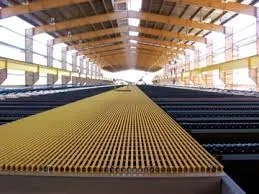
-
 Afrikaans
Afrikaans -
 Albanian
Albanian -
 Amharic
Amharic -
 Arabic
Arabic -
 Armenian
Armenian -
 Azerbaijani
Azerbaijani -
 Basque
Basque -
 Belarusian
Belarusian -
 Bengali
Bengali -
 Bosnian
Bosnian -
 Bulgarian
Bulgarian -
 Catalan
Catalan -
 Cebuano
Cebuano -
 China
China -
 China (Taiwan)
China (Taiwan) -
 Corsican
Corsican -
 Croatian
Croatian -
 Czech
Czech -
 Danish
Danish -
 Dutch
Dutch -
 English
English -
 Esperanto
Esperanto -
 Estonian
Estonian -
 Finnish
Finnish -
 French
French -
 Frisian
Frisian -
 Galician
Galician -
 Georgian
Georgian -
 German
German -
 Greek
Greek -
 Gujarati
Gujarati -
 Haitian Creole
Haitian Creole -
 hausa
hausa -
 hawaiian
hawaiian -
 Hebrew
Hebrew -
 Hindi
Hindi -
 Miao
Miao -
 Hungarian
Hungarian -
 Icelandic
Icelandic -
 igbo
igbo -
 Indonesian
Indonesian -
 irish
irish -
 Italian
Italian -
 Japanese
Japanese -
 Javanese
Javanese -
 Kannada
Kannada -
 kazakh
kazakh -
 Khmer
Khmer -
 Rwandese
Rwandese -
 Korean
Korean -
 Kurdish
Kurdish -
 Kyrgyz
Kyrgyz -
 Lao
Lao -
 Latin
Latin -
 Latvian
Latvian -
 Lithuanian
Lithuanian -
 Luxembourgish
Luxembourgish -
 Macedonian
Macedonian -
 Malgashi
Malgashi -
 Malay
Malay -
 Malayalam
Malayalam -
 Maltese
Maltese -
 Maori
Maori -
 Marathi
Marathi -
 Mongolian
Mongolian -
 Myanmar
Myanmar -
 Nepali
Nepali -
 Norwegian
Norwegian -
 Norwegian
Norwegian -
 Occitan
Occitan -
 Pashto
Pashto -
 Persian
Persian -
 Polish
Polish -
 Portuguese
Portuguese -
 Punjabi
Punjabi -
 Romanian
Romanian -
 Russian
Russian -
 Samoan
Samoan -
 Scottish Gaelic
Scottish Gaelic -
 Serbian
Serbian -
 Sesotho
Sesotho -
 Shona
Shona -
 Sindhi
Sindhi -
 Sinhala
Sinhala -
 Slovak
Slovak -
 Slovenian
Slovenian -
 Somali
Somali -
 Spanish
Spanish -
 Sundanese
Sundanese -
 Swahili
Swahili -
 Swedish
Swedish -
 Tagalog
Tagalog -
 Tajik
Tajik -
 Tamil
Tamil -
 Tatar
Tatar -
 Telugu
Telugu -
 Thai
Thai -
 Turkish
Turkish -
 Turkmen
Turkmen -
 Ukrainian
Ukrainian -
 Urdu
Urdu -
 Uighur
Uighur -
 Uzbek
Uzbek -
 Vietnamese
Vietnamese -
 Welsh
Welsh -
 Bantu
Bantu -
 Yiddish
Yiddish -
 Yoruba
Yoruba -
 Zulu
Zulu
grp stair tread
Understanding GRP Stair Treads A Comprehensive Guide
In recent years, safety and durability in construction and architecture have gained paramount importance, especially in high-traffic areas. One of the key components that has emerged in this context is the use of Glass Reinforced Plastic (GRP) stair treads. These specialized stair treads are designed to enhance safety, provide longevity, and resist various environmental factors, making them an ideal choice for both residential and commercial applications.
What are GRP Stair Treads?
GRP stair treads are precast stair coverings made from a composite material that incorporates glass fibers within a resin matrix. This combination results in a lightweight yet incredibly strong product. The use of GRP in stair treads provides numerous benefits over traditional materials like wood and metal, which often succumb to wear and tear over time.
Key Advantages of GRP Stair Treads
1. Safety Features One of the standout features of GRP stair treads is their non-slip surface. The addition of aggregates during the manufacturing process creates a textured finish that significantly improves grip underfoot. This characteristic is particularly vital in environments where surfaces may get wet or slippery, such as outdoor settings, pools, or industrial sites.
2. Durability GRP stair treads are resistant to corrosion, chemicals, and UV rays, making them suitable for a wide range of applications. Unlike wood, which can rot, or metal, which may rust, GRP offers a long-lasting solution that holds up against the elements. This durability translates to lower maintenance costs over time.
3. Lightweight Nature Despite their tough exterior, GRP stair treads are relatively lightweight compared to traditional heavy materials. This attribute allows for easier installation and reduces the load on supporting structures, which can be particularly beneficial in renovations or structures not designed to support heavy materials.
grp stair tread

4. Customizable Design GRP stair treads can be produced in a variety of colors, shapes, and sizes, allowing for customization to fit specific design needs. This flexibility ensures that aesthetic considerations can be merged with functionality.
5. Eco-Friendly Option Many manufacturers of GRP products focus on sustainable practices, utilizing recycled materials in their production processes. This makes GRP stair treads an eco-friendly choice for environmentally conscious builders and homeowners.
Applications of GRP Stair Treads
GRP stair treads can be utilized in multiple settings. They are commonly used in commercial buildings, factories, schools, healthcare facilities, and even residential properties. In schools, they provide safe walking surfaces for children, while in factories, they help maintain safety standards among workers.
Furthermore, their use in outdoor environments, such as public parks and boat docks, showcases their versatility. In residential areas, homeowners can benefit from GRP stair treads on patios or pool areas, ensuring safety for family and guests alike.
Conclusion
In conclusion, GRP stair treads represent a significant advancement in safety and construction material technology. With their unique combination of durability, safety, and aesthetic appeal, they are an excellent choice for a wide variety of applications. As awareness of their benefits continues to grow, GRP stair treads are likely to become an even more prevalent feature in both new constructions and renovation projects. By choosing GRP stair treads, builders and homeowners alike can enhance safety while ensuring long-term performance and sustainability.









